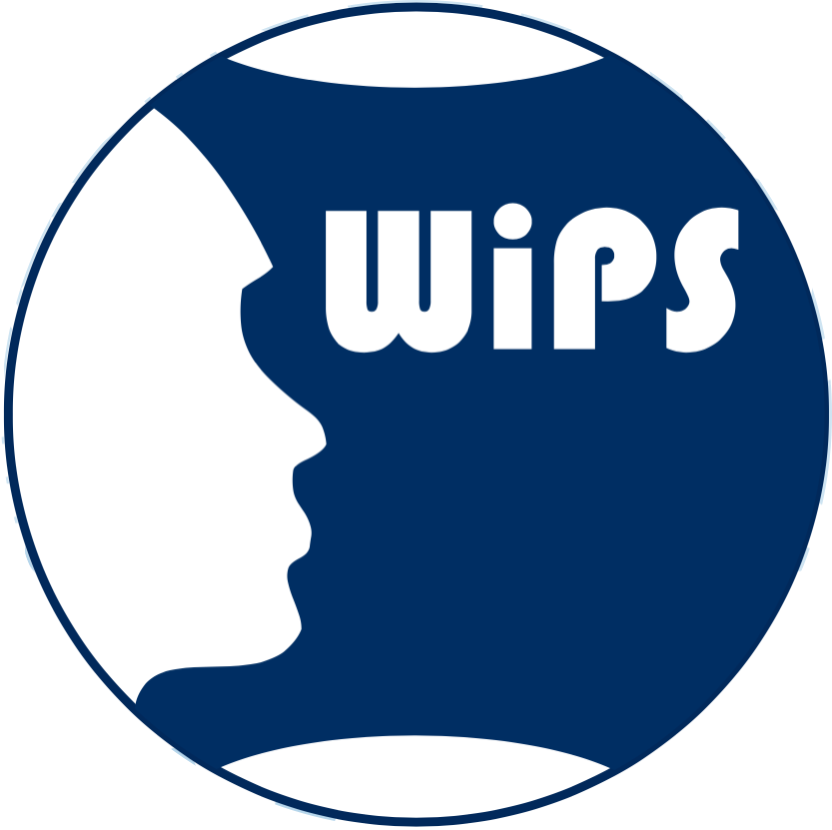Meet 100 Women in Polar Science and Support!
We’re collecting stories from 100 global women in polar employment, both polar science and non-academic polar roles. Check them out here – updated weekly!
Our thanks to the Curtis and Edith Munson Foundation for funding this project, The Ocean Foundation for acting as the US fiscal sponsor, and the Scientific Committee on Antarctic Research (SCAR) for their support.
Want to feature or know a cool woman who should? Contact us!
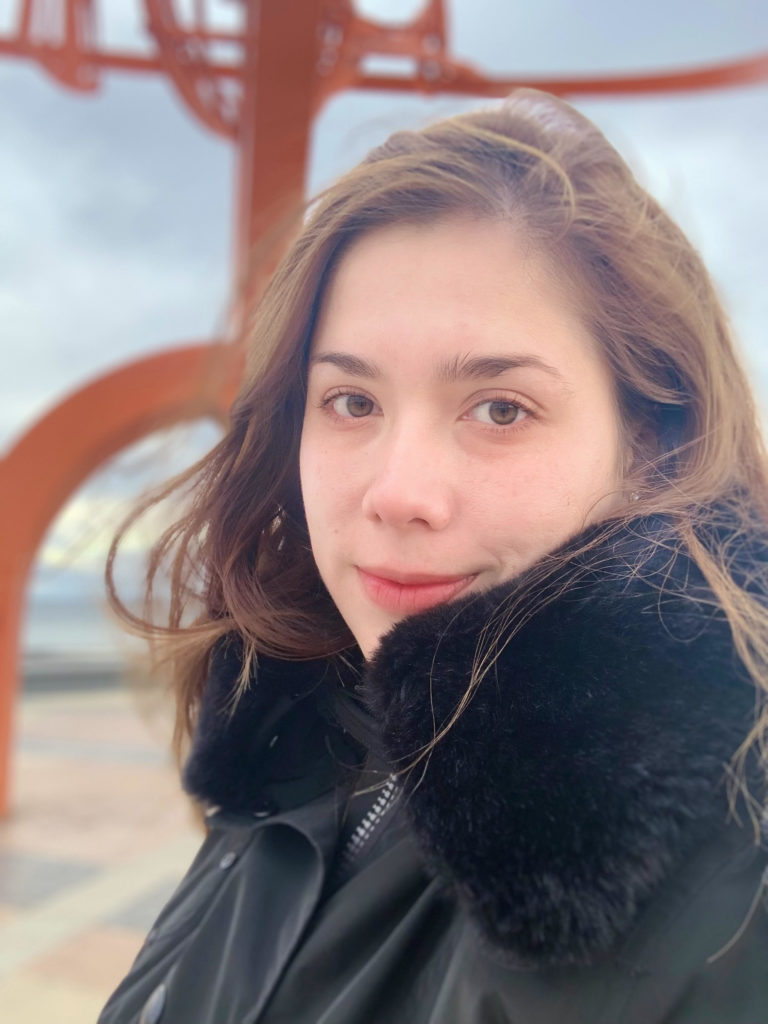
Victoria Valdivia, MA
Discipline: Political sciences
Age: 33
Nationality: Chile
Organisation: Center for Military and Strategic Studies (Chile)
Regional focus: Antarctic
Social media: LinkedIn
What’s the work that you do?
I’m a senior analyst responsible for researching political and international affairs aspects of Antarctic activities. My goal is to improve outreach activities with academia and the science sector. In my studies on security and defense, I focus on the connection between space security and Antarctic affairs, with the goal to contribute to preventing the emplacement of counterspace capabilities on Antarctic territories. I am also interested in the consequences of space debris on the circumpolar current and its impact on Antarctic and subantarctic ecosystems. Space debris could impact on food security and therefore has a strong social dimension that must be measured.
What keeps you going?
I like my job because I can mix my two passions: research and strategic planning. In my daily work, I can improve human relations and contribute to human security and the safety of Antarctic operations.
What’s your message to the world?
Working on Antarctic matters has shown me the most incredible human values. Each step in Antarctica means a lot of teamwork, where every single person is necessary to achieve success and to be able to return home. Following the Southern Cross is an incredible experience that confronts you with how tiny we are in comparison to the Antarctic Ocean and the continent itself. Preserving this place is key for the future of humankind because even if we conquer new planets, there is just one that we call home: Antarctica means future and hope. For that, we must make stronger efforts and keep collaborating across different disciplines. I want to emphasise how important it is to engage the humanities and social sciences in Antarctic affairs: to create new capabilities and to raise awareness about the marvelous sixth continent.
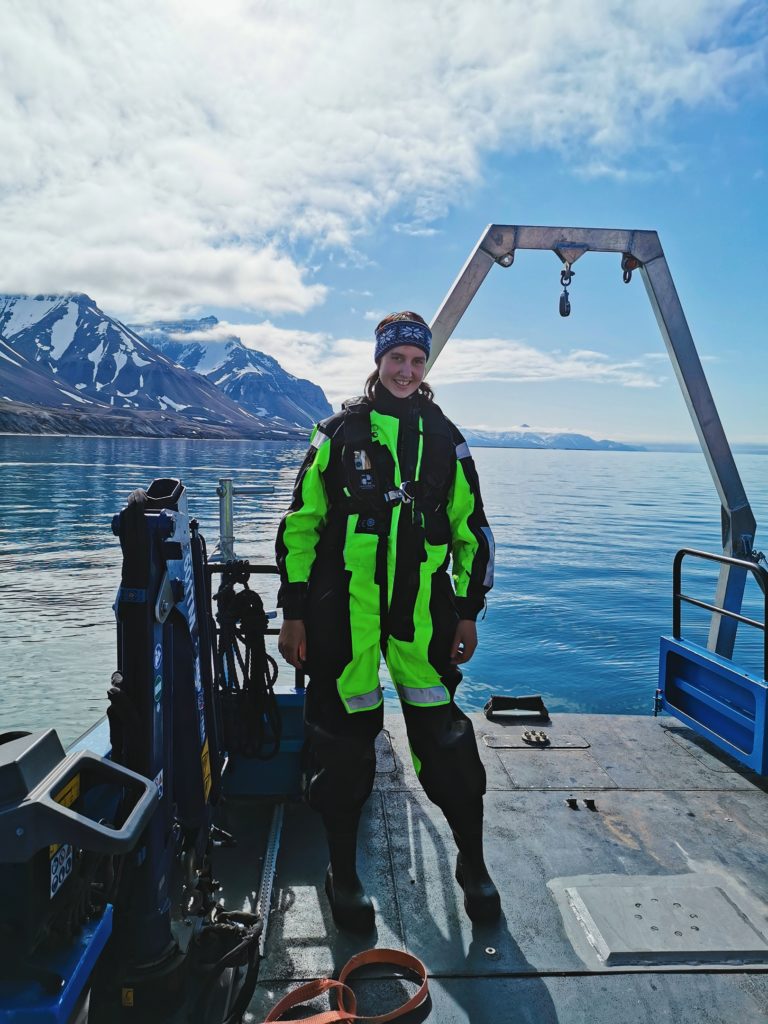
Sophie ten Hietbrink, MSc
Discipline: Cross-over between biogeochemistry, hydrogeology and glaciology
Age: 26
Nationality: The Netherlands
Organisation: Stockholm University (Sweden)
Regional focus: Arctic
Social media: LinkedIn and ResearchGate
What’s the work that you do?
I’m a PhD student focused on cryosphere-driven submarine groundwater discharge in the Arctic. Despite being previously overlooked in polar regions, it is becoming increasingly clear that the groundwater system is a major transporter of meltwater into the ocean. In these dynamic aquifers, the hydraulic head is increased by glacier and ice sheet loading, intensifying groundwater flow. The discharged groundwater can notably impact carbon mobilization and coastal ecosystems. We employ sediment coring to access these freshened groundwaters, and by using both analytical chemistry and hydrogeological models I aim to improve our understanding of these systems.
What keeps you going?
Personally, I find it incredibly exciting to help push the boundaries of what we know and at the same time have the opportunity to continue to learn and grow. Pursuing a PhD was therefore a no-brainer for me. Moreover, conducting research allows me to contribute to our understanding of how and why the climate and environment changes, which is crucial to build a more sustainable world and safeguard our precious polar regions. And as the cherry on top, I get to experience the sheer magnificence of the Arctic during fieldwork expeditions.
What’s your message to the world?
Despite many people believing we can engineer nature to our advantage, the grandeur and brute power of the polar regions humbles us humans. I believe they serve as a poignant reminder that we are merely a part of a larger system—planet Earth—which deserves our utmost respect.
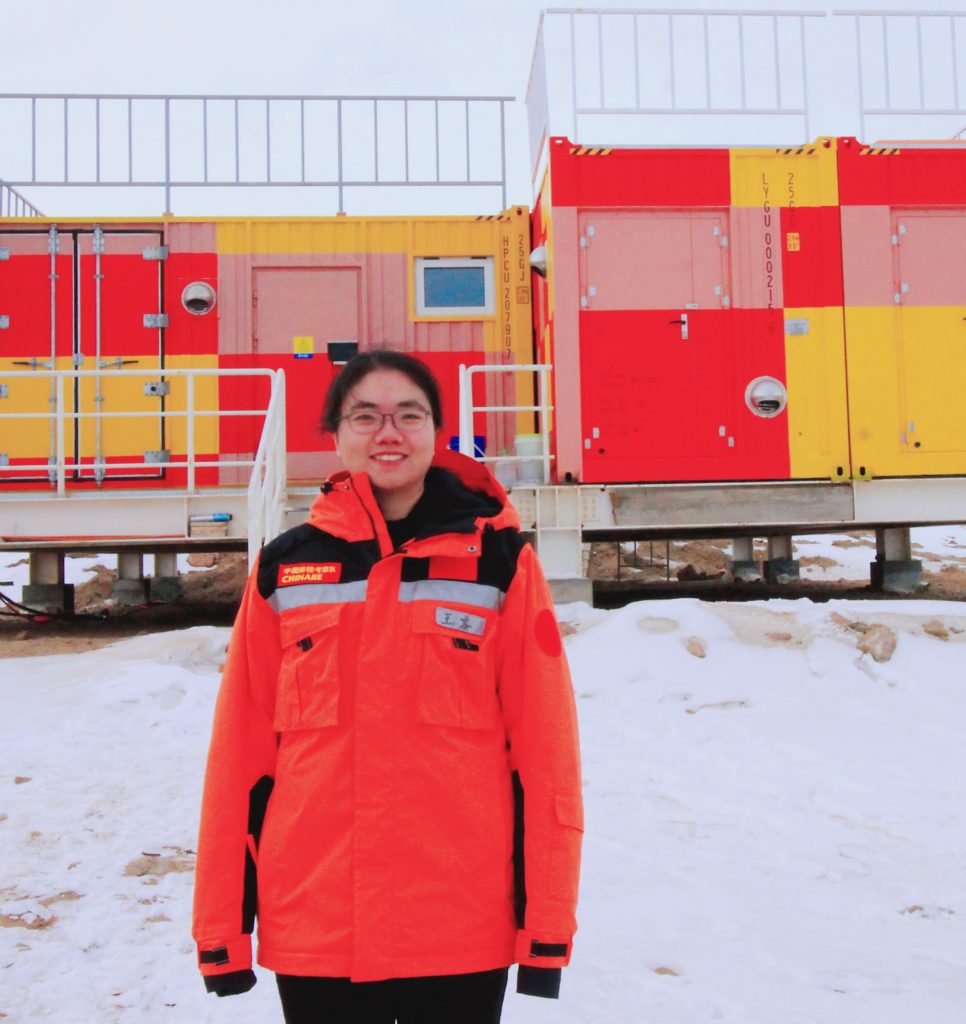
Rui Wang, PhD
Discipline: Space physics
Age: 42
Nationality: PR China
Organisation: Polar Research Institute of China
Regional focus: Arctic and Antarctica
Social media: ResearchGate and WeChat (18616610018)
What’s the work that you do?
My research focuses on atmospheric dynamics in the polar middle and upper atmospheres, such as planetary waves, gravity waves, tides, tropopause, polar night jet, and stratospheric sudden warming. From November 2019 to April 2020, I led a team to participate in the 36th Chinese National Antarctic Research Expedition and established a lower and middle atmosphere lidar system at Zhongshan Station, Antarctica, which realizes the high-precision measurement of troposphere-stratosphere-mesosphere temperatures and boundary-layer winds. I also served as Secretary of the Atmospheric Working Group (AWG) of the International Arctic Science Committee (IASC) from 2017 to 2019.
What keeps you going?
The polar regions are extremely vulnerable to global climate change. They are an important part of the global atmosphere system, but are also host to many unique phenomena and dynamic processes that distinguish them from middle and low latitudes. However, due to adverse natural conditions in the polar regions, their observation and research have been limited. The strong desire to help people know more about them is what keeps me going.
What’s your message to the world?
The world is big and amazing. Let’s explore and understand it better together.
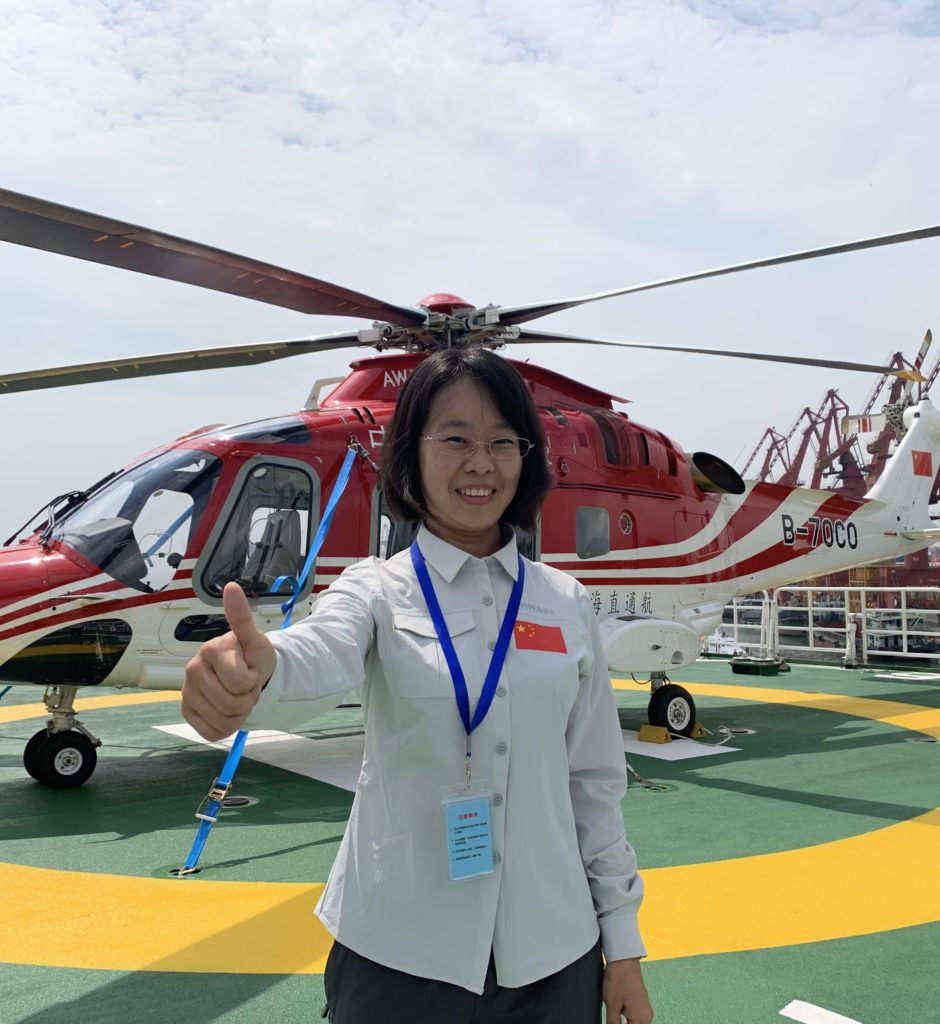
Shunan Cao, PhD
Discipline: Microbiology
Age: 39
Nationality: PR China
Organisation: Polar Research Institute of China
Regional focus: Arctic and Antarctica
Social media: ResearchGate and WeChat (wxid_q5eyiwdgr2vm32)
What’s the work that you do?
I focus on both microbiology in marine ecosystems and lichen biology in landscapes, specifically in the field of microbial ecology and genomics in the Arctic and Antarctic environments and the succession of lichen-moss communities in the Fildes Peninsula.
I have organized and coordinated Chinese Antarctic Expeditions twice as Chief Expedition Leader, gaining valuable experience by participating in both Arctic and Antarctic ship-based expeditions. My research contributions and experience in polar research make me a valuable asset in advancing our understanding of polar ecosystems, particularly in relation to microbial communities.
What keeps you going?
The polar regions are amazing places. Arctic and Antarctic expeditions offer unparalleled opportunities to conduct fieldwork and access remote, pristine ecosystems that have been relatively untouched by human activities. These expeditions allow us to collect valuable samples and data that can lead to groundbreaking discoveries and advances in the field of microbiology. It is vital to study these regions that are highly vulnerable to climate change and human activities because they have a significant impact on Earth’s climate. Through polar microbiology, I can assess the effects of these changes on microbial communities and their ecological functions and contribute to our understanding of microbial diversity, functions, and interactions in these regions.
What’s your message to the world?
Understanding and respecting nature is essential. the polar regions hold crucial clues to our understanding of the intricate web of life on our planet. They are at the forefront of environmental change and understanding the impact on microbial life is crucial for predicting and mitigating the consequences. We must embrace the wonders of the polar world, cherish its delicate balance, and strive to protect and preserve these pristine environments. By doing so, we can unlock their secrets and ensure a sustainable future for our planet.
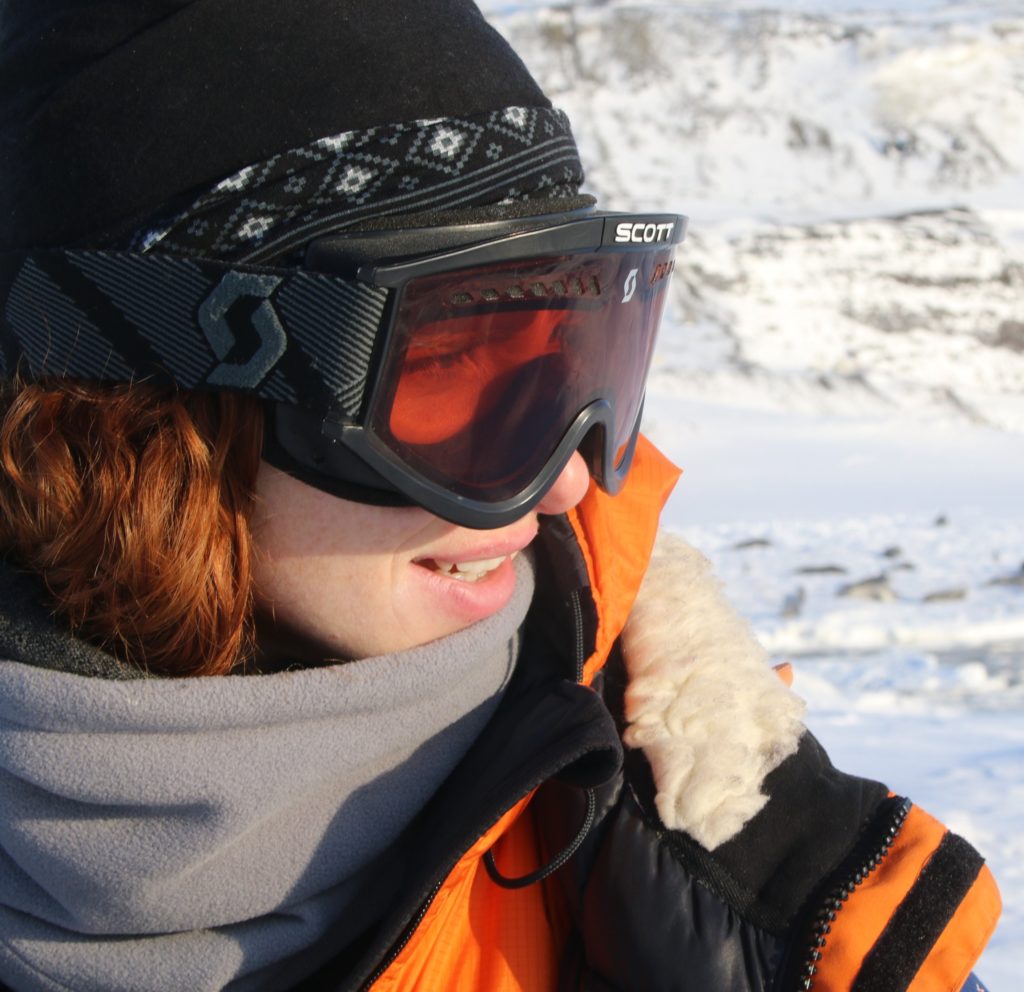
Rose Foster-Dyer
Discipline: Marine ecology
Age: 30
Nationality: NZ Pākehā
Organisation: University of Canterbury (New Zealand)
Regional focus: Antarctica
Social media: ResearchGate and Twitter
What’s the work that you do?
I am currently a PhD candidate studying megafauna ecology in the Ross Sea. My research uses bio-logging techniques to study foraging ecology of Weddell seals and remote sensing to assess population dynamics of emperor penguins and how they respond to environmental change. I am also applying a distribution model to investigate how the two species interact in the Ross Sea and exploring how this may change given the projected climate-induced changes in sea ice distribution and extent.
What keeps you going?
I feel incredibly lucky that I get to do what I do each day. The fieldwork was a highlight, Antarctica is more beautiful than I ever thought possible. But I also love the daily grind – reading, writing, and learning new things. My passion for marine conservation and the polar regions was why I pursued Antarctic research, and I hope to be able to contribute to meaningful research that makes a difference in the complex Antarctic conservation space. I want my baby to get the opportunity to fall in love with polar species just as I did.
What’s your message to the world?
Human-induced climate change is real. And individuals have more power than they think.
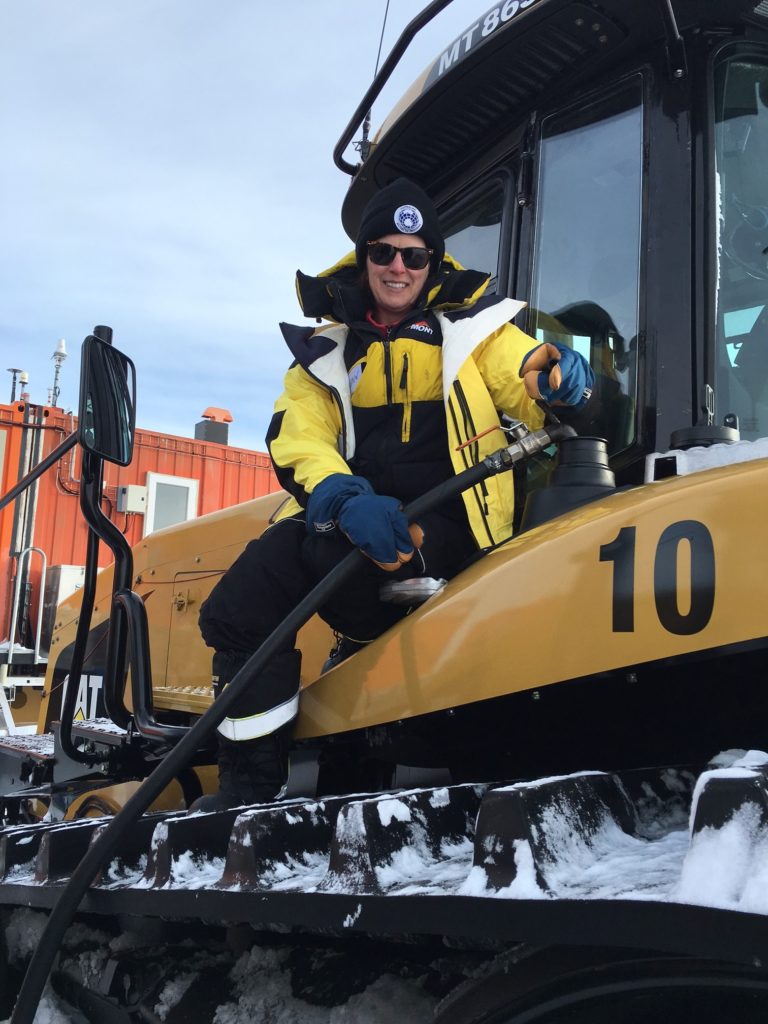
Karen Rees, Ba(Hons)
Discipline: Policy & International Relations
Age: 60
Nationality: Germany and Australia
Organisation: Antarctic Tasmania, Dep of State Growth, Tasmania (Australia)
Regional focus: Antarctica
Social media: LinkedIn and Instagram
What’s the work that you do?
In the role of Tasmanian Antarctic Advocate I connect organisations and individuals to the Hobart Antarctic Gateway to build its reputation and capability. I participate in Government delegations to ATCM, COMNAP and on Tasmanian Trade Missions with Antarctic-related industry representatives. I also lead the newly formed Antarctic Women’s Network in Tasmania. I am a board member of Mawson’s Huts Foundation, and an IAATO observer. In the past I drove a tractor as part of an inland traverse with the French Antarctic program for a season.
What keeps you going?
I am a passionate advocate for the Hobart Antarctic gateway and love my work in Antarctic policy and international relations as well as promoting the role of women in Antarctica. Antarctica has captured my heart and I work in service of this vast wilderness and its importance to the future of our planet.
What’s your message to the world?
To fulfil your dreams it is important to ask. I have learnt that the things that are deeply important to me at a heart and soul level usually come to me, often in surprising and unexpected ways. I no longer question the pathway, but simply take the next step. When I had an opportunity to drive a tractor across the Antarctic icecap at age 53, while going through menopause I realised I could never have dreamed big enough for this to happen, but I was smart enough to listen and grab the opportunity when someone else pointed it out to me. The big opportunities along my Antarctic pathway were actually a question of saying ‘yes’ in the face of fear.
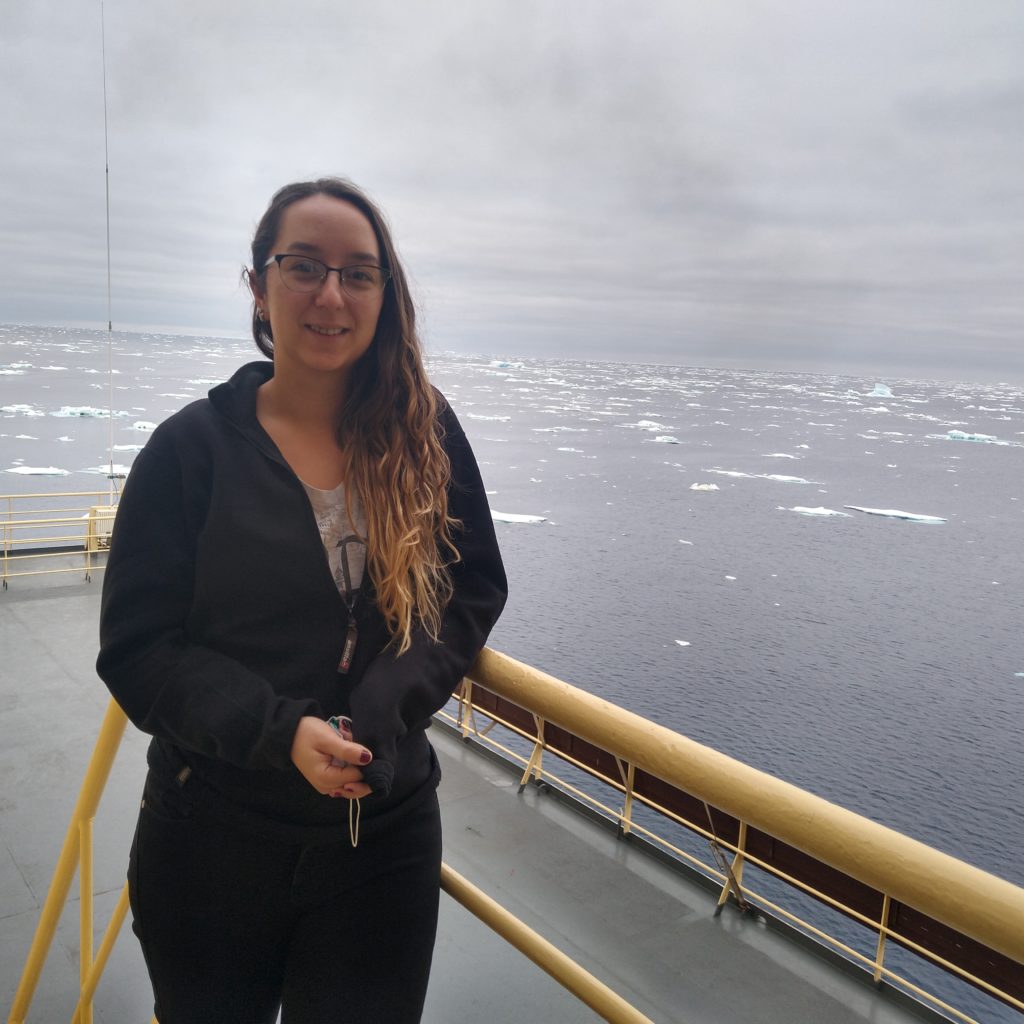
Constanza Sofía Salvó, MSc
Discipline: Remote sensing and sea ice
Age: 28
Nationality: Argentina
Organisation: Institut national de la recherche scientifique (Canada)
Regional focus: Arctic and Antarctica
Social media: LinkedIn and Twitter
What’s the work that you do?
Until recently, I worked as an ice analyst in the Argentine Naval Hydrographic Service (SHN) and delivered glaciological advice onboard the ARA Almirante Irizar Icebreaker for the summer Antarctic campaigns. Now, I’m researching the use of satellite images to provide solutions to the Inuit communities for safe traveling on Arctic sea ice. More specifically, I use Synthetic Aperture Radars to study sea ice features that can be dangerous when traveling with sleds or skidoos on the fast sea ice.
What keeps you going?
I’m super grateful for the opportunity that life gave me to get to know the polar ecosystems, which for me is an untypical environment since I was born in a sub-tropical region. It’s fascinating to observe the great complexity that water in a solid state can hold; a beauty that needs an open mind and huge patience to understand. I’m still on this path, a challenging one, but for sure not boring at all.
What’s your message to the world?
The race to explore the poles has mobilized many men in the past, and sea ice, icebergs and polar ecosystems have attracted the attention and interest of millions of people. There is still much to discover in these inhospitable places, and being able to observe them, together with being a representative of the female gender in their discovery, is what keeps me going to study the majestic gifts that nature gives us.
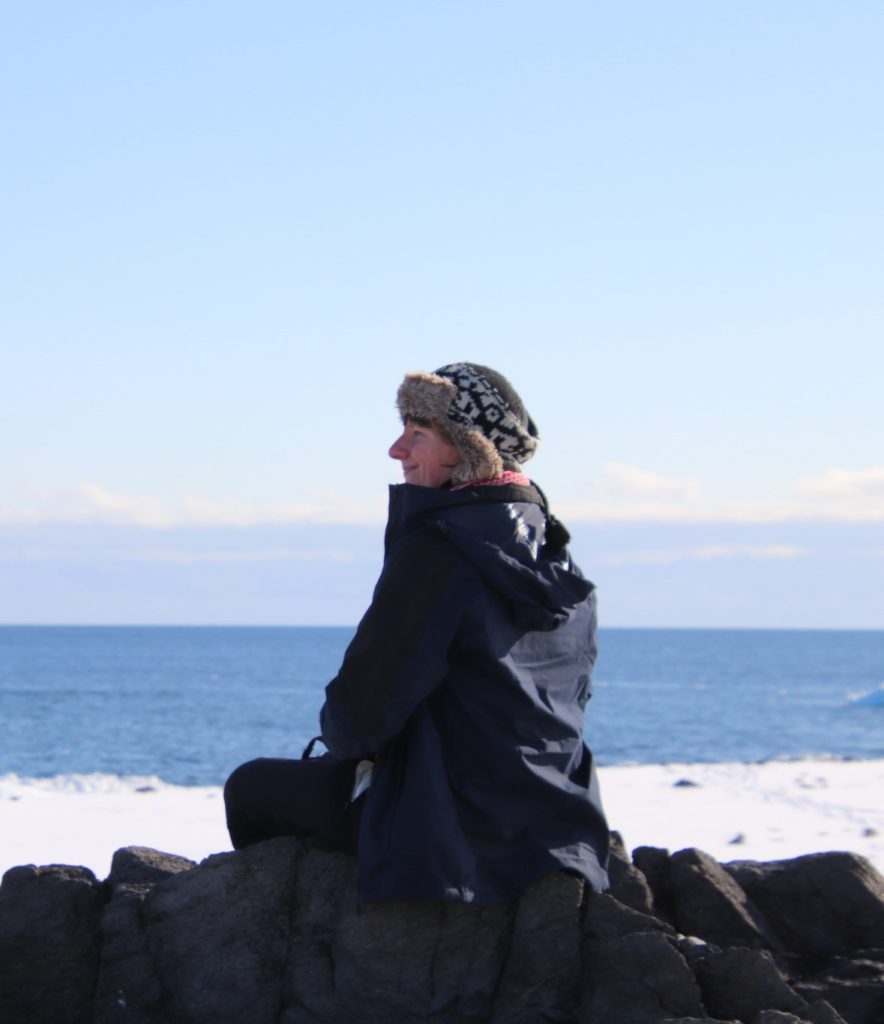
Anna Osiecka, MSc
Discipline: Bioacoustics
Age: 33
Nationality: Poland
Organisation: University of Gdańsk (Poland) & University of Copenhagen (Denmark)
Regional focus: Arctic
Social media: ResearchGate and Twitter
What’s the work that you do?
I study the vocal behaviour of marine birds and mammals. My main interests lie in what information can be coded in vocalisations (e.g., sex, ID, emotional state), and how it can be coded (e.g., frequency or time domain, or perhaps maintaining or losing the rhythm). I also try to do some work to improve equity and achieve **proper pay to the workers** in STEM.
What keeps you going?
I LOVE the fieldwork, and I truly love writing. Love it. Nothing can beat being out in nature with my amazing animals. But I also really enjoy working with people – the great company of curious, bright people who share this passion. But funds, colleagues and life can also be tricky, so I am lucky to also live and breathe roller derby.
What’s your message to the world?
First of all, pay your staff fair money – that includes students, interns and the field folks – and treat them as the full, complex humans they are, not your simplified idea of a colleague! Also, I think we in polar research should put so much more effort into strengthening collaborations, maximising data output and use, and limiting our footprint – be it the tons of plastic and animal produce brought to the field, or the frequent trips that could be limited via better research networks. There’s room to do better.
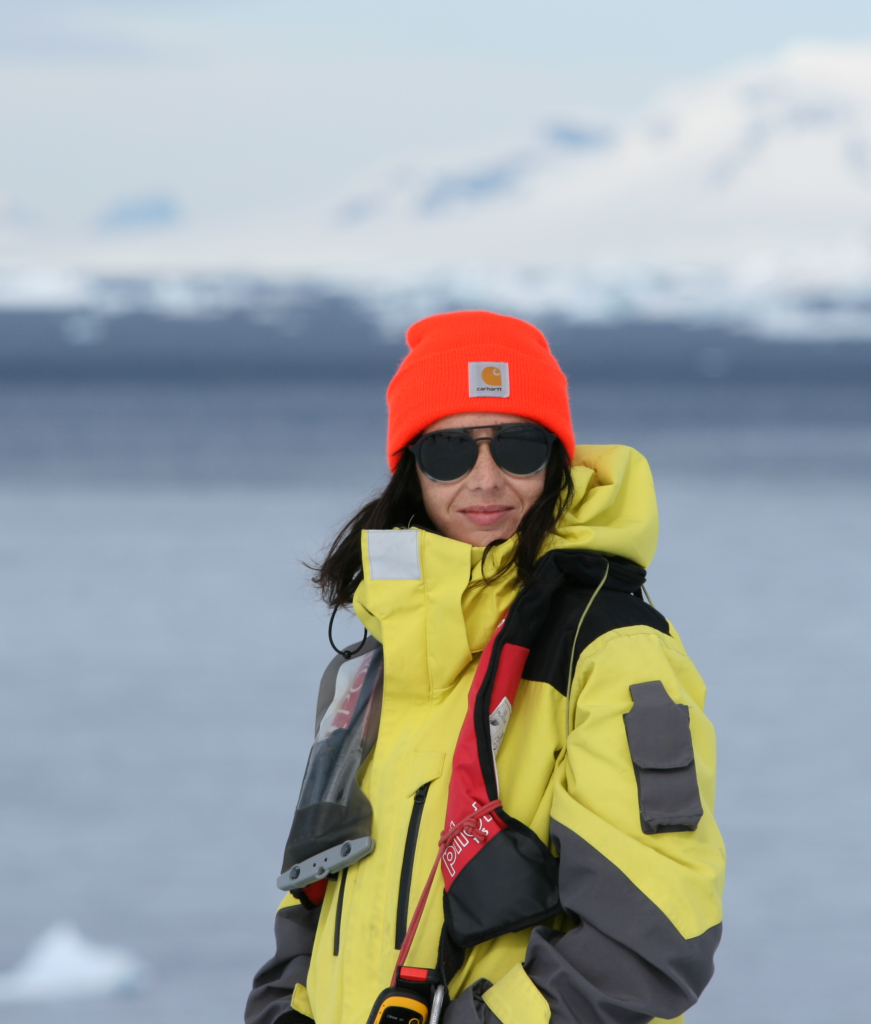
Marion Fourquez, PhD
Discipline: Oceanography
Age: 36
Nationality: France
Organisation: Mediterranean Institute of Oceanography (France)
Regional focus: Arctic and Antarctica
Social media: LinkedIn and ResearchGate
What’s the work that you do?
I am a researcher in marine biogeochemistry. My primary focus is on the Southern Ocean, but I have recently expanded my research to include the Arctic Ocean as well. My main interest lies in understanding the biological carbon pump, which is one of the most crucial global processes for sequestering CO2. In particular, I study the interactions between microorganisms (e.g., phytoplankton and bacteria) and their environment (e.g., nutrient resources, stress) to assess the ecosystem’s capacity and resilience.
What keeps you going?
Science is as wonderful as the world of research is challenging. I have found myself stepping away on several occasions to take a deep breath. However, I keep coming back to this competitive world because it provides me with the unique opportunity to experience polar regions on my terms. I also derive great satisfaction from being on oceanographic vessels and pushing myself in demanding conditions. Ultimately, it is always a privilege to wake up in the morning with a new question and have the ability to answer it, as that is what defines my job.
What’s your message to the world?
It has been, and still is, a long quest for me to work in polar regions. It remains a privilege and requires dedicated effort to visit these areas from time to time. I hope the world can wholeheartedly recognize the need to protect the polar regions and acknowledge that those who visit should be deserving. Understanding the ecosystem is the key to promoting its beauty, as humans have a tendency to protect what they find truly captivating.
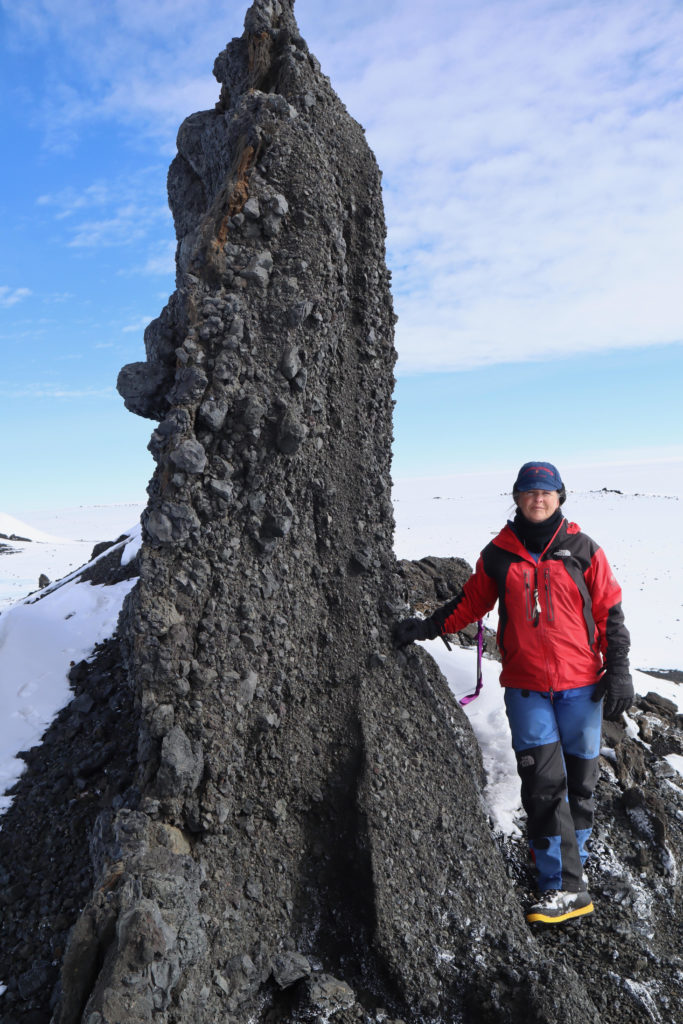
Nelia Dunbar, PhD
Discipline: Geology
Age: 60
Nationality: USA
Organisation: New Mexico Tech (USA)
Regional focus: Antarctica
Social media: LinkedIn and website
What’s the work that you do?
I am a geologist. I’ve been working on active volcanism and interactions between volcanoes and ice in Antarctica since 1983. This work has involved extensive, remote field work on Antarctic volcanoes. One thread of study focuses on active volcanism, which provides insight into how volcanoes work, helping to understand and predict volcanic eruptions. I also carry out field mapping and sampling of volcanic deposits, and examining volcanic ash deposits in blue ice fields and deep ice cores drilled through the Antarctic ice sheets. This work informs us about ice sheet history and past ice sheet thickness.
What keeps you going?
I am at my best and happiest when living in a tent camp, with a small field team, in remote parts of Antarctica. The beauty, mystery and wildness of Antarctica are an incredible inspiration, as is doing field work on remote volcanoes and being the first people to visit and examine the rock outcrops that allow us to discover the volcanoes’ history. Living in this remote environment, and being able to focus all of my energy on geology, and basic living, is an incredibly luxury in an increasingly busy and distracting world.
What’s your message to the world?
When you get a chance to do something adventurous or exciting, like going on a trip to Antarctica, just say yes! Focus on the positive, and go for it.
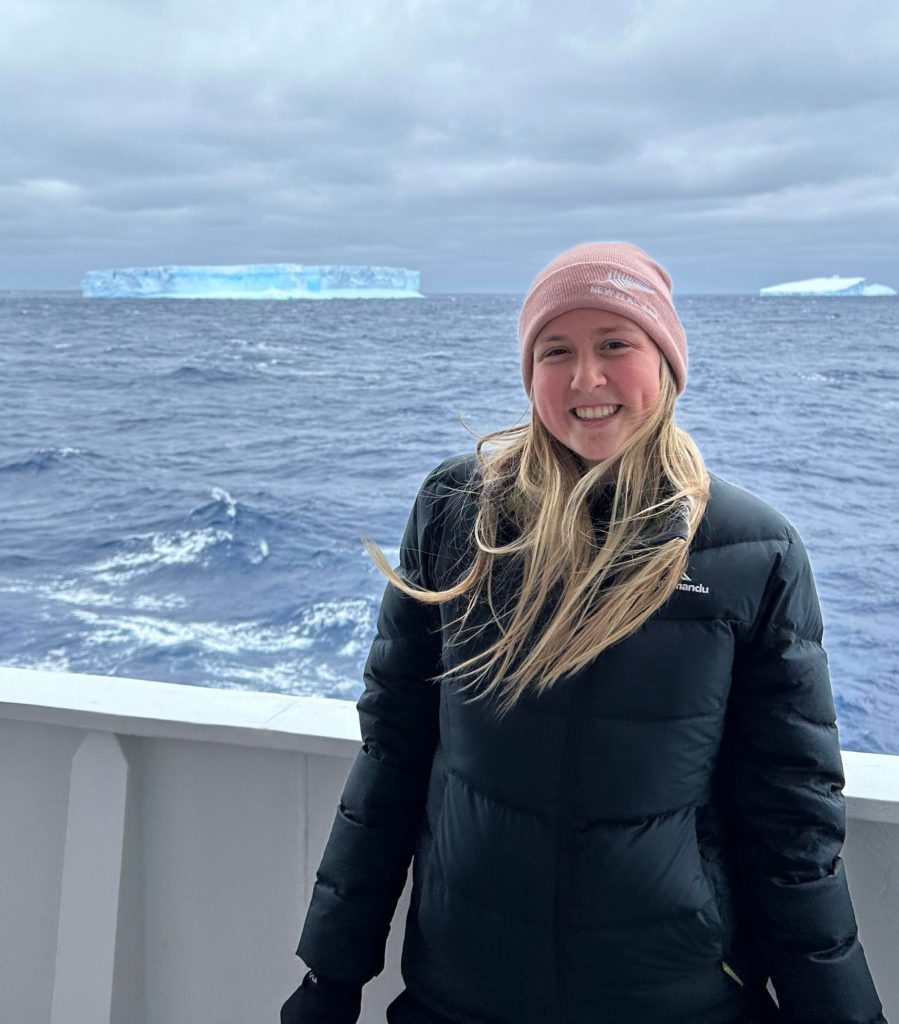
Sienna Blanckensee
Discipline: Oceanography
Age: 23
Nationality: Australia
Organisation: The University of Queensland (Australia)
Regional focus: Antarctic
Social media: Instagram and LinkedIn
What’s the work that you do?
I am a PhD student currently working on Antarctic Bottom Water. This is water formed in Antarctica that sinks to the sea floor and drives global circulation. My research focuses on determining what criteria is needed for this water mass to form and how this might change in the future, or how it has already changed in the past. I do this by using observational data from ships, moorings, argo floats and my favourite – seals. Small sensors are attached to seals’ heads and this allows us to get data in hard-to-reach places that are integral for my research.
What keeps you going?
I have always had an interest in Antarctica as I believe it is truly a magical place. The fact that I get to contribute towards our greater understanding of the region keeps me going. I also enjoy that the more you learn about something, the more you realise what we don’t know. It’s like a big puzzle piece that many people work on together, slowly creating a clearer picture. Contributing to this greater goal is a daily inspiration.
What’s your message to the world?
Our polar regions deserve everything we can do to help, whether that be via research, policy making, science communication etc. So, get out there, meet new people, share your interests, and follow your passions.
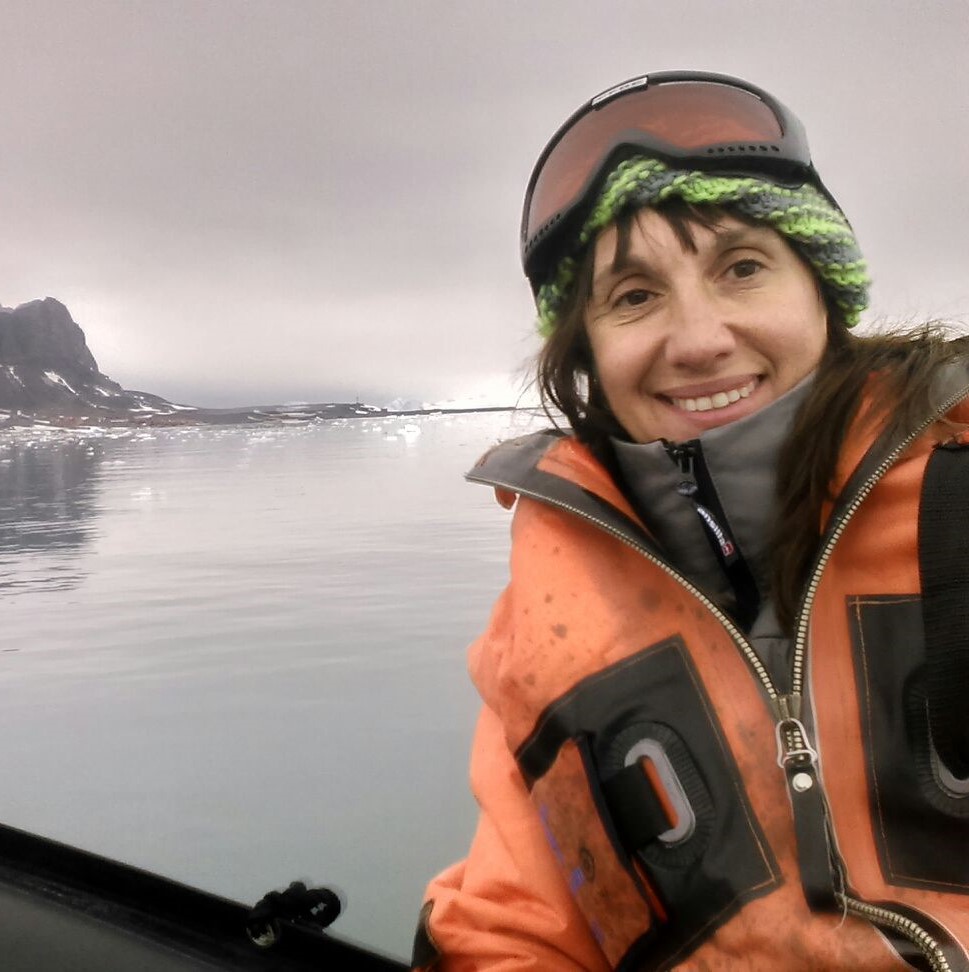
María Liliana Quartino, PhD
Discipline: Marine Biology (macroalgae)
Age: 59
Nationality: Argentina
Organisation: Instituto Antártico Argentino
Regional focus: Antarctica
Social media: ResearchGate and Instagram
What’s the work that you do?
I have been working on Antarctic macroalgae since 1988. I lead a research group at the Argentine Antarctic Institute that studies high-latitude coastal ecosystems with an emphasis on macroalgae and their role in global change. For years, we have been investigating the macroalgae of the Potter Cove coastal ecosystem, an ecosystem greatly affected by glacial retreat. In our laboratory, we are developing different studies on subtidal and intertidal macroalgae taxonomy, ecology, and ecophysiology in relation to physical variables in a climate change frame (i.e., glacier retreat, sedimentation, fast ice duration, ice scouring) and their impact on the coastal Antarctic food web.
What keeps you going?
Since I was a child, I’ve had a special fascination for everything related to nature and a very special connection with the sea. I dreamed of being a marine biologist. Currently, what keeps me going is continuing to guide and mentor young Ph.D students and junior researchers from the IAA.
What’s your message to the world?
For me, working in Antarctica goes beyond the fascinating experience of doing research in a remote and magical place. After 35 years of studies there, I am convinced of the great responsibility involved in conducting research in this pristine and vulnerable environment, where the effects of climate change are increasingly severe. I also believe that it is valuable to study marine organisms such as macroalgae, which also implies collaborating in their preservation since they are primary producers that can contribute to the mitigation of climate change.
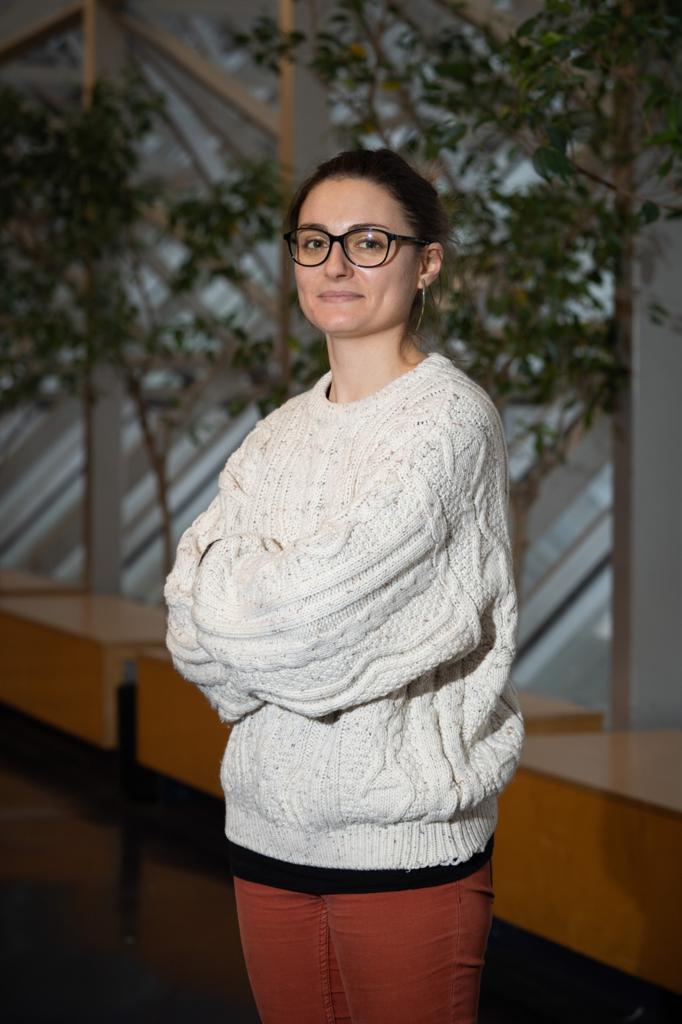
Anaïs Rémont
Discipline: Law and policy
Age: 29
Nationality: France
Organisation: ANCORS at University of Wollongong (Australia)
Regional focus: Antarctic
Social media: Instagram and LinkedIn
What’s the work that you do?
My background is in international environmental law. I am funded by the Securing Antarctica’s Environmental Future project, led by a consortium of Australian Universities and collaborating with other universities around the world. I am at the very beginning of my PhD journey and my research question needs to be defined further. The main idea is to work on interconnections between international ocean governance and climate change issues, considering the concept of ocean commons. I want to explore interactions and synergies between legal regimes that protect the ocean, with a specific focus on the Southern Ocean and Antarctica. It includes the Antarctic Treaty System, the Rio Conventions on biodiversity and climate and finally the more recent one, the Treaty on Marine Biodiversity Beyond National Jurisdiction. I am particularly interested in the most efficient level of governance to have better and the most dynamic implementation of these conventions.
What keeps you going?
I strongly believe that we definitly need to build bridges between decision-makers and researchers. Since the establishment of the IPCC and more recently the IPBES, we know that anthropogenic pressures in wild spaces like Antarctica and the high seas and on biodiversity in a broader sense due to climate change threats are increasing at an alarming rate. At the end of the day, it touches on the most basic fundamental right of each creature on this planet: the right to live a life with respect and dignity, reaching for happiness. This is not an abstract concept but a very concrete one, implying the right to a healthy environment. Now is the time to change the world dynamics and move towards a fairer world while respecting the principles of ecological solidarity, equity and inter-generational justice to preserve the viability of the world not only for our generation but also for the coming ones!
What’s your message to the world?
You are doing your best in your own unique way, so be gentle with yourself.
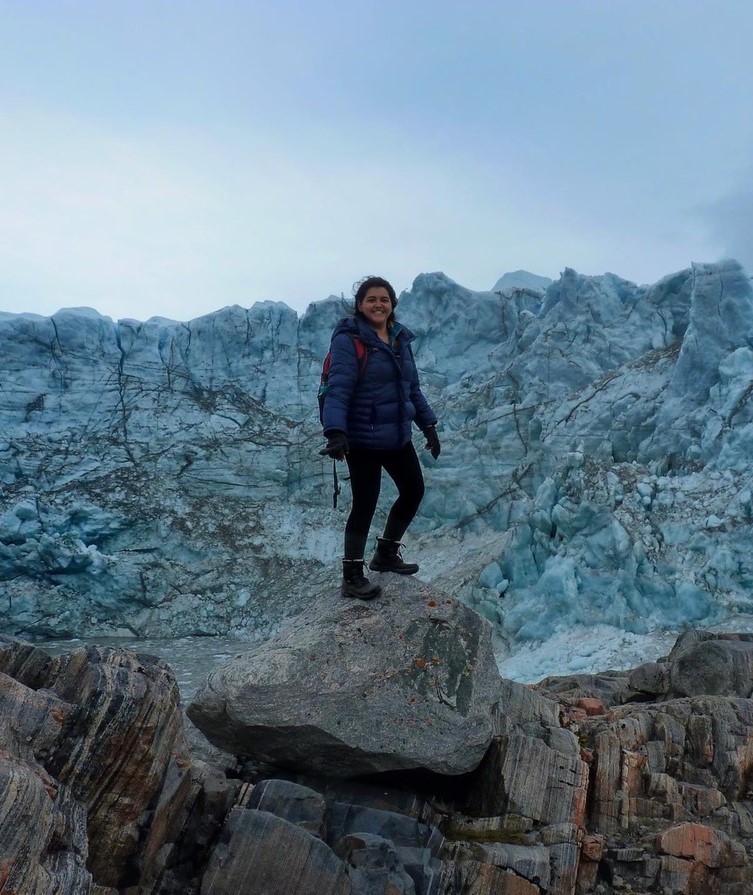
Guadalupe Barajas Vasques
Discipline: Ecology
Age: 27
Nationality: USA
Organisation: San Diego State University/University of California, Davis (USA)
Regional focus: Arctic
Social media: Twitter
What’s the work that you do?
As an Arctic microbial ecologist working on my Ph.D., I research the fate and transport of methane in the polygonal tundra of the North Slope of Alaska. My goal is to investigate how methane travels through the landscape during the early spring thaw to better understand the carbon inputs from the rapidly thawing Arctic and its influence on the global carbon budget.
What keeps you going?
My desire to learn as much as possible about climate change stems from the deep-seated love and appreciation of nature my mother instilled in me. That passion has kept me going and I hope to one day be one of the women in STEM, especially as a Latina, that young girls can look up to. Having had few role models that looked like me as I was growing up is what truly drives me to be a Latina climate scientist for future young scientists.
What’s your message to the world?
It isn’t often that people find a way to combine their passions in life – I am so thankful to be able to combine my love for the Arctic into my daily work! Climate change is an incredible daunting phenomenon that we are just beginning to experience and understand. As this threat looms over us, it provides an opportunity for people and scientists to come together and collaborate as we combat it.
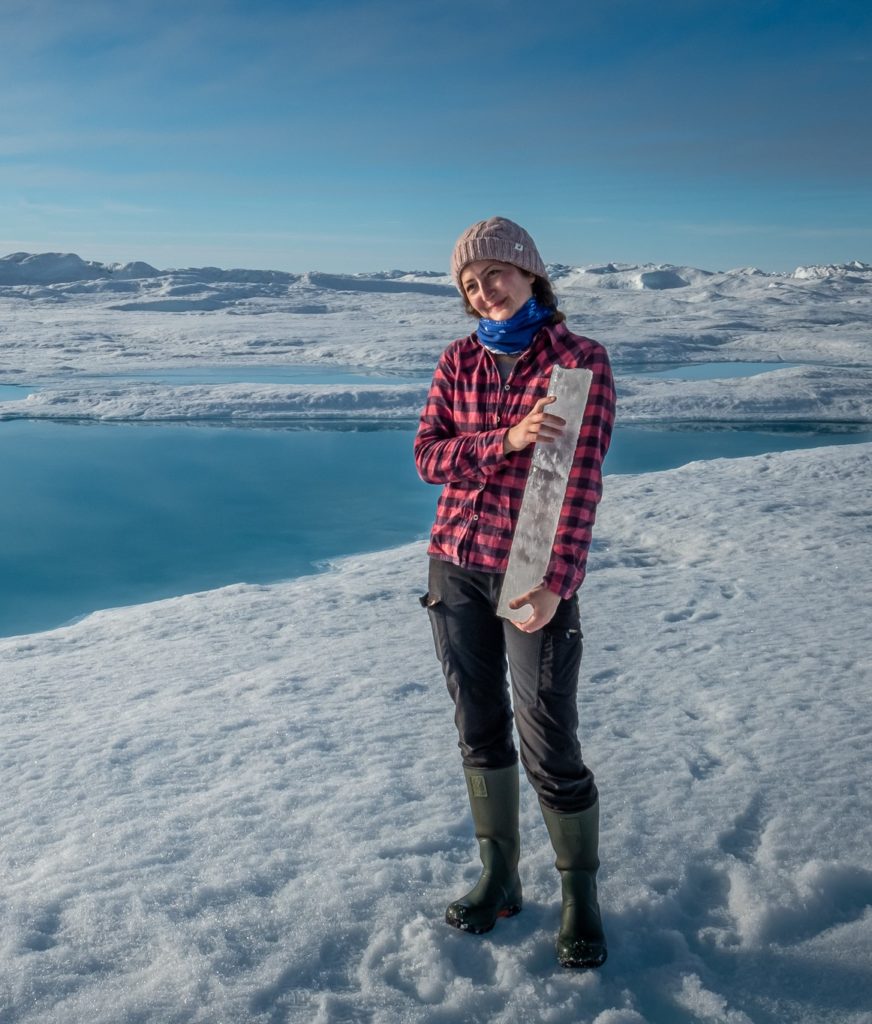
Josephine Rapp, PhD
Discipline: Marine Microbiology, focus on cryosphere
Age: 34
Nationality: Germany
Organisation: Université Laval (Canada)
Regional focus: Arctic
Social media: Twitter and Instagram
What’s the work that you do?
I study the microbial life and interactions in frozen environments. I am particularly interested in the role of the sea-ice environment for microbial evolution. Currently, my work is focused on multi-year ice in the so-called Last Ice Area of the Arctic.
What keeps you going?
My love for sea ice was instant – it’s so beautiful, wild and ever-changing. There are so many secrets still to be unraveled about the millions of viruses and microbes that live inside the ice, but their living space is disappearing at an unprecedented rate. Being able to go to the field, see and experience the ice is something I‘ll be forever grateful for.
What’s your message to the world?
We cannot see microbial cells and viruses with the naked eye, but despite their small size they are integral members of the ecosystem with fundamental roles for biogeochemistry and environmental health. Understanding their functions and responses to change is critical in understanding and predicting the consequences of the disappearing cryosphere.
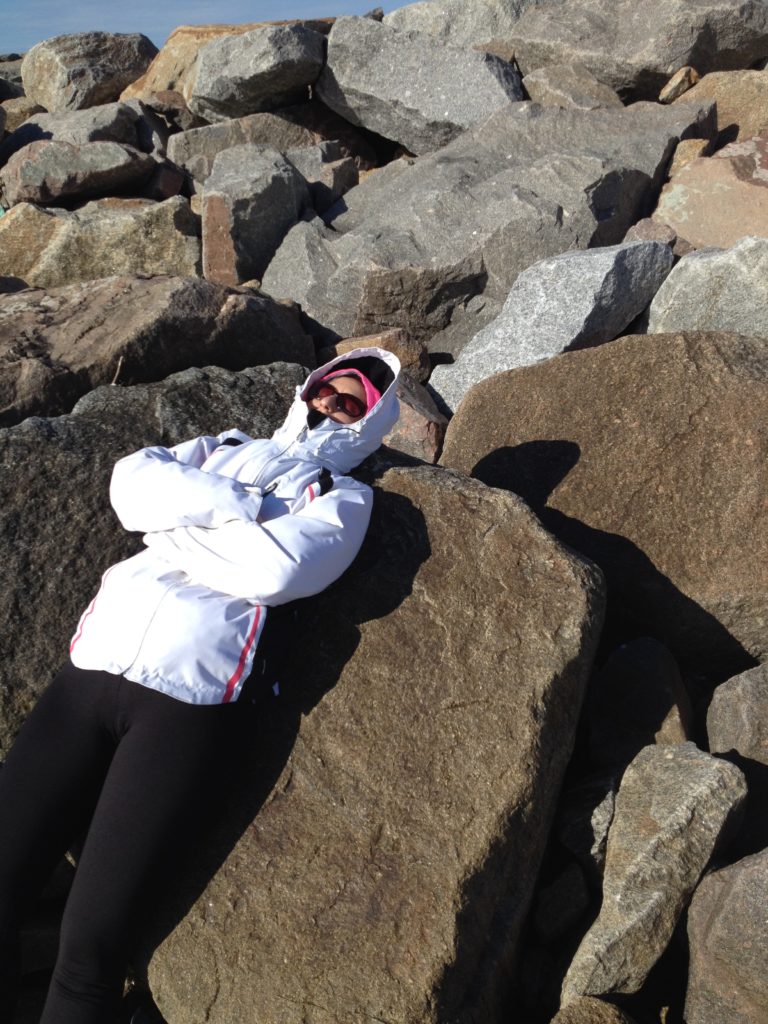
Céline Rodrigues, MA
Discipline: International relations
Age: 41
Nationality: Portugal
Organisation: Universidade Nova de Lisboa (Portugal)
Regional focus: Arctic
Social media: LinkedIn
What’s the work that you do?
At the moment I am focused on developing my PhD research about why and how Portugal is being placed in the Arctic considering the challenges of maritime security in the Atlantic and human security in the Arctic as a consequence of climate change. In that way, Portugal is getting closer to the Arctic and needs to prepare for geopolitical changes that will affect its maritime area.
What keeps you going?
That would be the passion about my research and being able to know more every day. There’s always the chance for a new discovery. Also, hoping it can fill gaps in research.
What’s your message to the world?
In the 21st century, humankind might reconnect with nature. I hope it happens. Only by understanding how nature functions, why humankind needs it and why human behaviour needs to change will we be able to respect this planet, be that on land or at sea. Understanding the importance of the Poles for humankind also reflects that kind of globalisation that is not about trade but about the connection of everything, including between human beings and nature. We are part of the ecosystem. Everything is connected.

Bethan Davies, PhD
Discipline: Glaciology
Age: 40
Nationality: UK
Organisation: Newcastle University (UK)
Regional focus: Arctic and Antarctic
Social media: Twitter and website
What’s the work that you do?
I am interested in how glaciers are responding to climate change. Glaciers are an important freshwater reserve for many people worldwide, and are also one of the biggest contributors to sea level rise. Warming temperatures are shrinking our glaciers, with important societal impacts. Our ability to model future glacier behaviour is only ever as good as our ability to simulate the past – and this is limited by our understanding of the past! I use satellite imagery and geomorphological data to reconstruct past and current glacier behaviour under different climates.
What keeps you going?
I love working with interesting people, in interesting places. I get many opportunities to undertake fieldwork in beautiful, and often remote, regions, and am always inspired by the landscapes in which I work.
What’s your message to the world?
Small personal lifestyle changes add up to big impacts. Eating a little less red meat, walking or cycling or taking public transport a little more, and flying a little less, all add up to impactful change. But the biggest and most significant action we can take is to vote and campaign for better political choices.
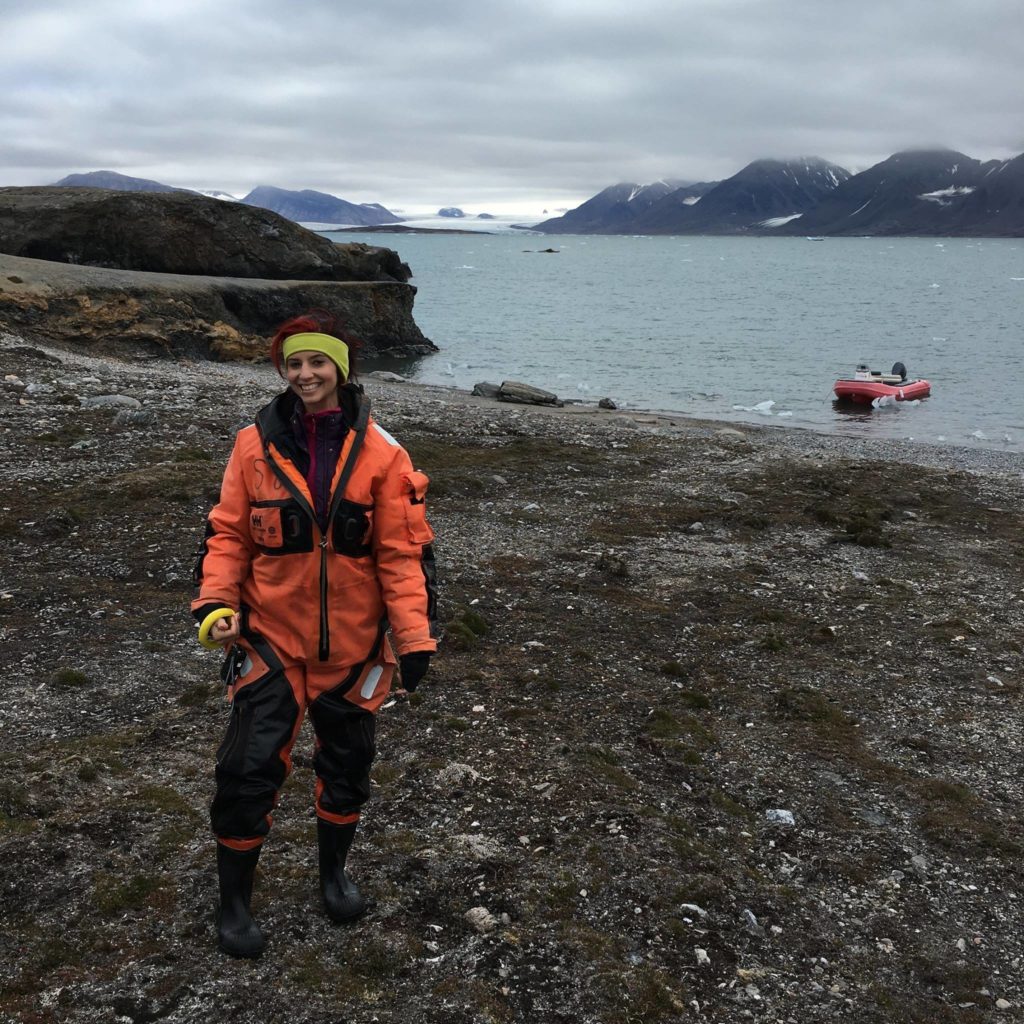
Joy Buongiorno, PhD
Discipline: Microbial ecology
Age: 33
Nationality: USA
Organisation: University of Tennessee (USA)
Regional focus: Arctic and Antarctic
Social media: Website and LinkedIn
What’s the work that you do?
I combine metagenomic and metatranscriptomic sequencing analysis with geochemistry to understand how microbial communities in fjord sediments respond to environmental change.
What keeps you going?
I love the people that I work with! They are inspiring, brilliant, and hardworking. Working as part of diverse, cross-disciplinary teams allows me to expand my understanding of the systems I work in and see things in a more holistic way.
What’s your message to the world?
My personal philosophy in my work and in life generally is to live authentically and own my truth. What this looks like is bringing my whole self to any situation I am in, not shrinking or masking who I am to please others. My hope is that this encourages others to do the same.

Prof. Helen Amanda Fricker
Discipline: Glaciology
Age: 53
Nationality: UK
Organisation: Scripps Institution of Oceanography, UC San Diego (USA)
Regional focus: Antarctica
Social media: Twitter and Instagram
What’s the work that you do?
I am a professor whose research focuses on ice sheets in Antarctica and Greenland and their role in the climate system. I use a combination of satellite radar and laser altimetry and other remote-sensing data to understand ice sheet processes. My main research involves ice shelves, and their role in buttressing grounded ice. Our group investigates Antarctic ice shelf mass loss/gain processes such as iceberg calving and basal melting and freezing, that result from competing ocean, atmosphere and glaciological processes. I am interested in subglacial hydrology following my 2006 discovery of a system of active subglacial lakes.
What keeps you going?
I am driven by my passion for understanding the world we live in, and how it is changing, and how humans play a role in that change. I feel like it is my duty to report what I know to others.
What’s your message to the world?
Earth is changing on timescales of a few decades, so we can now see the differences within our own lifetimes. I recently went on a trip to Antarctica and a highlight was our visit to our farthest destination — the Larsen A inlet on the Antarctic Peninsula, in the NW Weddell Sea. This area is “ground zero” for Antarctic Ice Sheet change, as Larsen A Ice Shelf collapsed in 1995, followed in 2003 by Larsen B to its south. When Larsen A collapsed, I was a 1st year PhD student in Hobart. A couple of years later I attended a conference talk where its collapse was presented as a sequence of satellite images, and attributed to warming air temperatures driving surface melting and “hydrofracture”. The image sequence was so stunning and the collapse so rapid that it took us all by surprise; I recall many of us in the audience being so shocked that we gasped and dropped our jaws to the floor. This was a big wake-up call for our community as until then we thought ice sheets changed slowly. It was not so much the collapse of the ice shelf that caused alarm — that ice is already floating — but the fact that the ice behind the ice shelves, that sits on land, began to flow faster into the ocean. This is because ice shelves act like a buttress for the grounded ice; if you weaken that buttress, the ice it is holding back will flow faster. So the Larsen A collapse event was especially significant for glaciologists. We navigated and pushed through thick sea ice for many hours, and eventually launched the Zodiacs to take us through the ice mélange to the shore at Cabe Sobral. This was the former ice sheet grounding line (where it met the ocean and formed Larsen A Ice Shelf) and it is now an ice-free beach. It turns out that we were the first people to have landed on that new beach, and we saw a running stream with algae in it showing that this region has already started adapting to the deglaciation. It was an honour to experience this, but also shocking to think that this has only happened since I was a student.
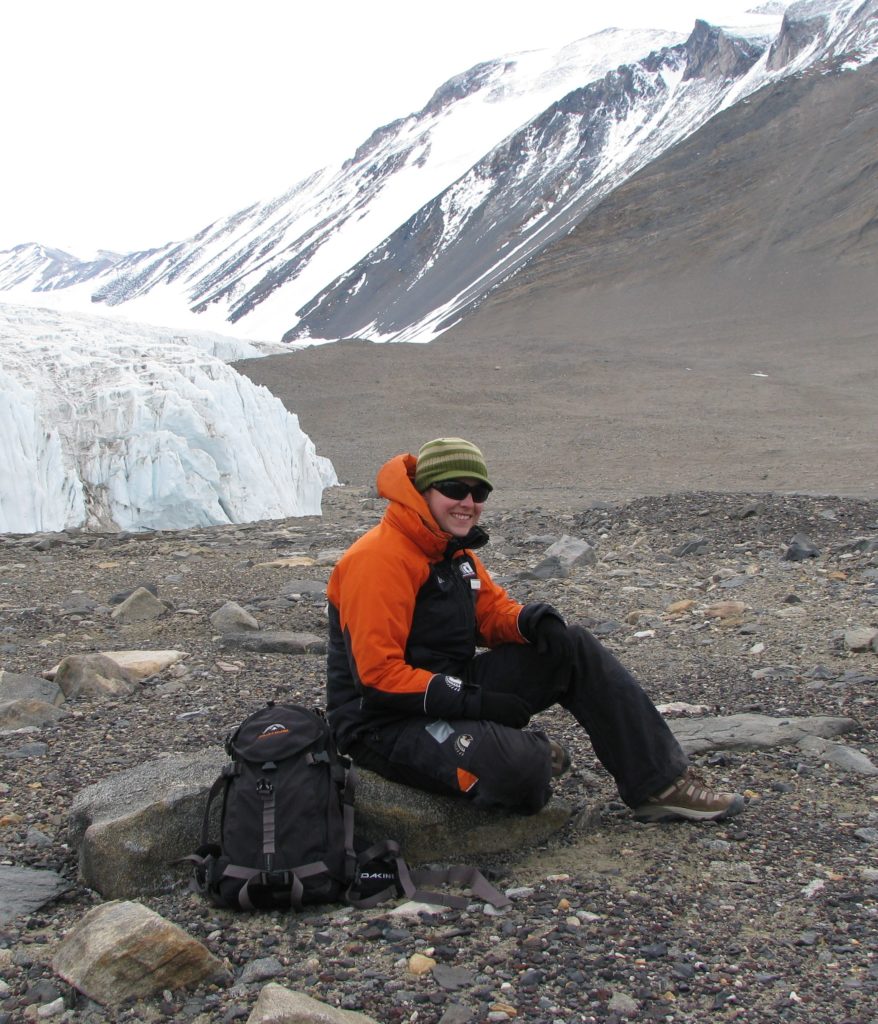
Ceisha Poirot
Discipline: Enviromental Management
Age: 42
Nationality: New Zealand
Organisation: Antarctica New Zealand
Regional focus: Antarctica
Social media: LinkedIn
What’s the work that you do?
I work for the New Zealand Antarctic program heading up the Policy, Environment and Safety team. We ensure that New Zealand maintains high standards of health and safety and environmental management in all of our activities in Antarctica. I am also New Zealand’s Representative to the Committee for Environmental Protection and the expert group leader of the Council of Manager of National Antarctic Programs Environmental Protection Group supporting and enhancing protection of Antarctica through policy fora.
What keeps you going?
I am incredibly lucky to work with so many likeminded people who want to better understand and ensure the long term protection of one piece of this earth that is still relatively untouched and intact. It is really special to be able to work peacefully with so many different countries who share an interest in Antarctica and work towards agreement even when we might not agree.
What’s your message to the world?
When we work together, powerful things can happen.
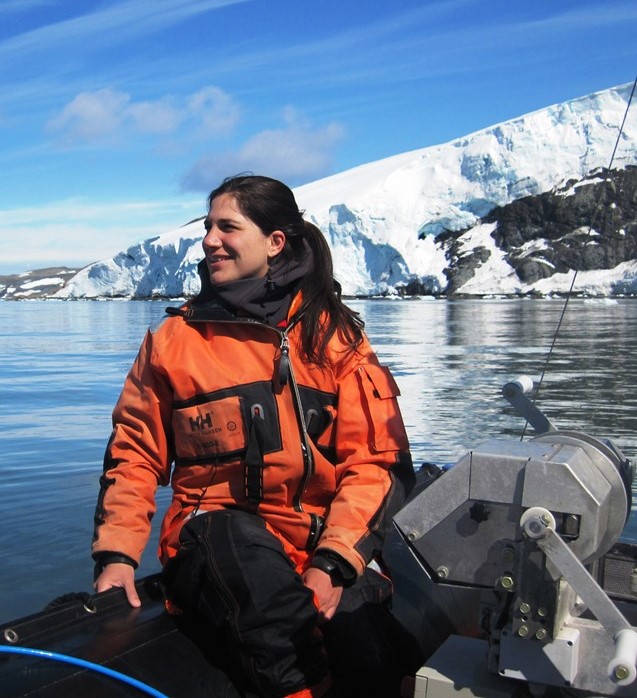
Dolores Deregibus, PhD
Discipline: Coastal biology & marine resource management
Age: 41
Nationality: Argentina
Organisation: Argentine Antarctic Institute/CONICET
Regional focus: Antarctic
Social media: Instagram and ResearchGate
What’s the work that you do?
Together with my team, I focus on investigating how Antarctic coastal ecosystems respond to rapid physical changes, and how the Antarctic sea bed provides strong blue carbon ecosystem services that could potentially have a role in mitigating wider CO2 emissions. In addition, I am interested in contributing to science and data collection while collaborating and participating in reinforcing the importance of spatial management in the Western Antarctic Peninsula and the adoption of the proposed Domain 1 Marine Protected Area (D1MPA) under scenarios of environmental changes and increased human presence in Antarctica.
What keeps you going?
Scientific research is very valuable. It is our strongest tool to help us understand and mitigate the impact of climate change and the human presence in Antarctica.
What’s your message to the world?
I believe that the conservation of the Antarctic ecosystems is urgently needed due to their unique biodiversity. The urgency comes from the heavy impact climate change has on this region.
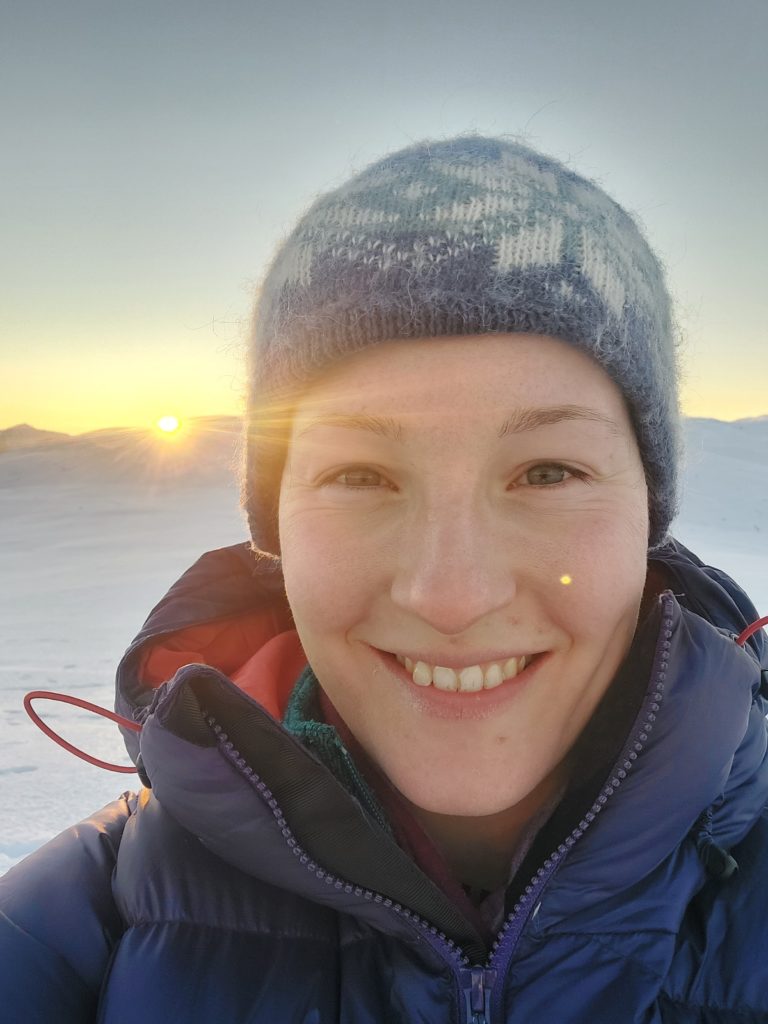
Jennifer Arthur, PhD
Discipline: Glaciology, remote sensing
Age: 29
Nationality: France and UK
Organisation: Norwegian Polar Institute (Norway)
Regional focus: Arctic and Antarctic
Social media: Twitter and LinkedIn
What’s the work that you do?
I am a glaciologist and remote sensing polar scientist, focusing on monitoring the Antarctic Ice Sheet. In particular, I am interested in ice sheet surface hydrology, ice shelf evolution, ice shelf-sea ice-mélange interactions, and surface climate-firn-mass balance interactions. My PhD research focused on understanding the controls on the distribution and evolution of supraglacial lakes and the potential impact on ice-sheet mass balance and dynamics. Currently, I mainly use satellite datasets such as laser and radar altimetry together with model outputs for applications including quantifying ice-shelf calving, grounding line change, tide model validation and subglacial lake detection. Alongside my research, I am a keen advocate of polar science outreach and communication, as well as diversity, equity and inclusion in science.
What keeps you going?
I am motivated by a curiosity of our polar regions and wanting to contribute to improving our understanding of the rapid, climate-driven changes in the Antarctic and Arctic. There are still so many critical questions we don’t yet have the answers to about how these complex, unique systems work. It is also such a privilege to be part of such an international, interdisciplinary polar science community full of fantastic people.
What’s your message to the world?
My advice, especially to other early-career polar scientists, is: be curious, take opportunities as they arise, ask questions. Celebrate everyone’s strengths and differences. Give those around you the support and space to fully participate in polar science. Collectively, we can make a difference.
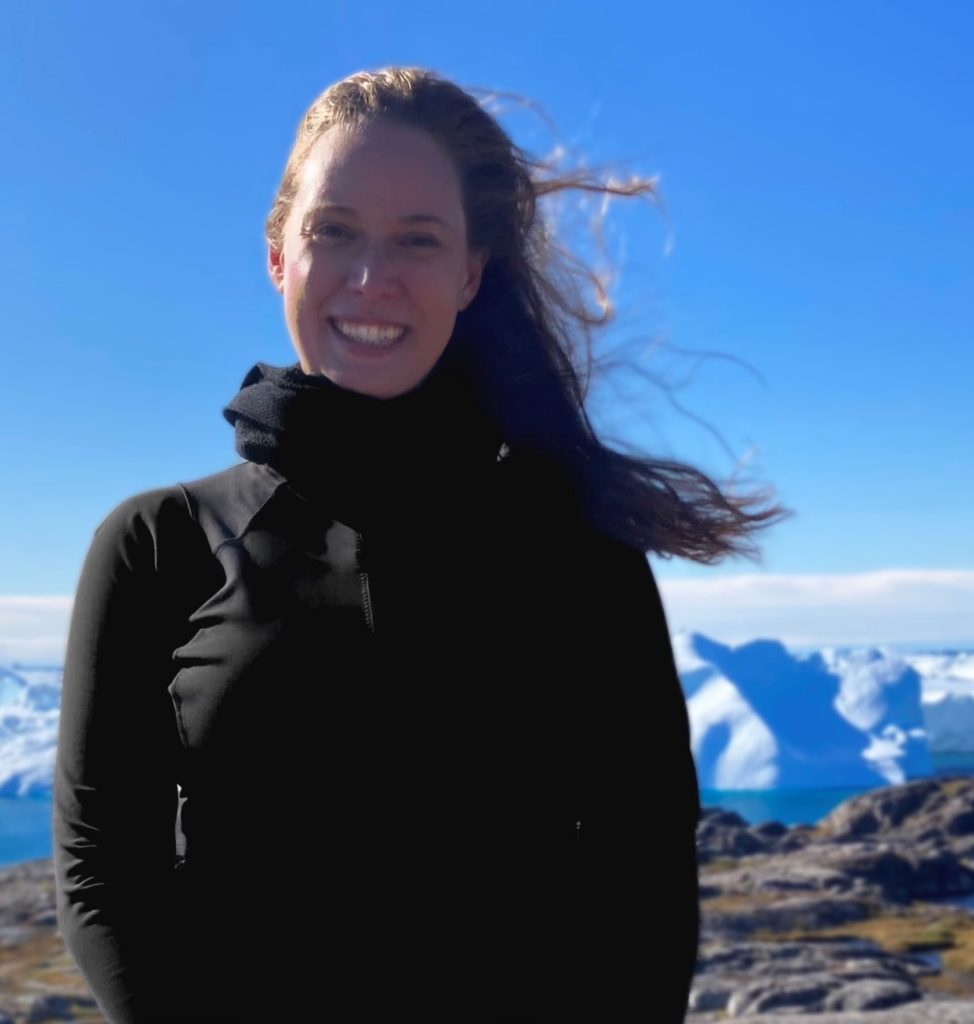
Simone Maria Stünzi, PhD
Discipline: Permafrost research
Age: 30
Nationality: Switzerland
Organisation: Alfred Wegener Institute, Helmholtz Centre for Polar and Marine Research (Germany)
Regional focus: Arctic
Social media: Instagram and Twitter
What’s the work that you do?
I am fascinated by how different parts of an ecosystem interact with each other and how they react to changes in climate. Specifically, I study the vast boreal forests that cover parts of the permafrost regions in Siberia and Canada. These forests make up one-third of the world’s forests and are essential for regional and global climate patterns. The trees do more than provide oxygen or shelter for wildlife. They play a crucial role in regulating the temperature of the permafrost underneath. With changing climate conditions, near-surface permafrost is at risk. As the active layer deepens or the permafrost disappears, the entire ecosystem can be thrown out of balance. Additionally, changes in vegetation density and distribution can impact the feedback mechanisms between the forest and the permafrost. That’s where my research comes in. My work aims to understand how the interactions between vegetation, permafrost, and the atmosphere stabilize the forests and the underlying permafrost and how this is modified under changes.
What keeps you going?
My research is my passion as it enables me to devise innovative ways to comprehend the intricate interactions of complex ecosystems. By combining numerical modelling, remotely sensed land cover data, extensive fieldwork, and statistical analyses, I have developed novel approaches that push the boundaries of ecological research. I also collaborate with experts from different disciplines and cultures, which broadens my knowledge and deepens my interest in diverse methodologies. These partnerships have led to the creation of unique and valuable fieldwork datasets, which enable us to better understand and conserve one of our planet’s most delicate ecosystems.
What’s your message to the world?
The exceptional opportunity to participate in fieldwork in the Arctic has had a profound impact on my perspective. The things I saw, smelled and felt have left a lasting impression on me. The Arctic communities hold so much knowledge from diverse and rich cultural backgrounds, skills, and abilities to survive in challenging environments. In a rapidly changing world, it is crucial for humans – a small but significant portion of life on Earth – to remain open-minded and curious. Only by including everyone will genuine progress towards a more sustainable future be made.
